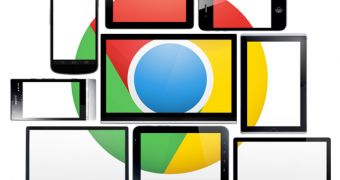Google Chrome is by several accounts the world's most popular browser, particularly when not taking into account the Chinese market. Granted, the Chinese market is the biggest out there.
Still, Chrome's market share is no indication that it's only four years old but, well, it is, and Google is just celebrating its birthday.
Since launch, Chrome has evolved beyond recognition; yet, at the same time, it retained its core strengths. While the UI has changed, several times, in every respect, Chrome still looks like the Chrome that came out four years ago, in a good way.
The same emphasis on minimalistic UI remains, the tabs are still strangely shaped and so on. Underneath though, Chrome is many, many times faster than the initial release. Of course, the other browsers stepped on the gas during that time as well, but mostly because of Chrome.
However, one thing that did change, in a subtle but important way, is how we browse the web and even what the web means.
Four years ago, the iPhone had just come out, it was an expensive toy and it didn't even have third-party apps yet.
Now, people spend more time online on their mobile devices, phones or tablets which hadn't even been "invented" yet.
What's more a lot of the online interaction doesn't even happen in browsers anymore thanks to internet-connected apps.
"When we launched Chrome four years ago, most people accessed the web through a personal computer. Our goal was to help build a better web--a web that is faster, simpler and more secure," Google's head of Chrome, Sundar Pichai, wrote.
"Fast forward to today, and many people have more than one device--a smartphone, a tablet, a computer at work, a computer at home," he added.
"The beauty of the web is that it’s the one platform that can deliver a consistent experience on any device with a browser. We've been working to build a more seamless Chrome experience that lets you to take your Chrome stuff with you on all your devices," he said.
Just having Chrome the browser on all of your devices is not enough, the important part is having all your stuff come along with you.
This is where Chrome sync, the first and still the best built-in sync mechanism, comes in. It takes all of your data, bookmarks, history, even open tabs and makes it available no matter where you are.
It's sync that transformed the way people use browsers and it's probably the single biggest change since Chrome was introduced. Not only that, it is now probably more important to Chrome than its speed or security or any of the things Google focused on initially, the essence of Chrome itself.

 14 DAY TRIAL //
14 DAY TRIAL //